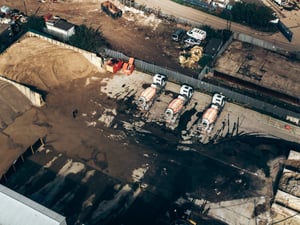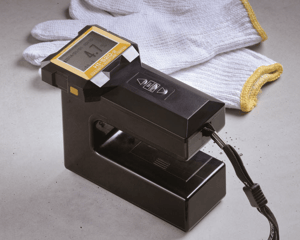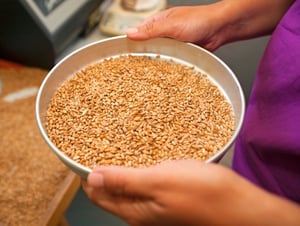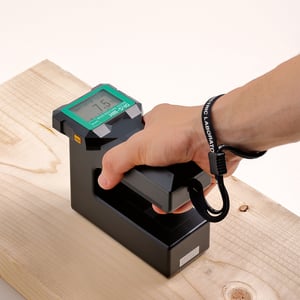 If you’ve ever worked with concrete in a construction project, you know there are many “half-truths” about successfully working with the material. Concrete can be a bit of an effusive product to use. Everything from temperature to groundwater to air circulating above a concrete slab can affect the moisture content in concrete greatly, and the wrong moisture levels can prove disastrous in something like a newly laid floor.
If you’ve ever worked with concrete in a construction project, you know there are many “half-truths” about successfully working with the material. Concrete can be a bit of an effusive product to use. Everything from temperature to groundwater to air circulating above a concrete slab can affect the moisture content in concrete greatly, and the wrong moisture levels can prove disastrous in something like a newly laid floor.
We’ve assembled some common misconceptions about working with concrete and how moisture content can vary. We’ve also included some solutions to avoid the issues that may arise with some of these misconceptions. Read on and “solidify” your new, corrected beliefs using the information below.
1. “Old concrete is definitely dry and ready to use.”
Just because concrete was poured many years ago does not mean that it is definitely dry and ready to use, even if there was already flooring installed on top of the slab. Concrete is an incredibly porous material that easily absorbs water, and pre-existing slabs can be exposed to water constantly.
Older slabs of concrete may have moisture trapped below the surface because of older, moisture resistant flooring materials that trap moisture in. This can be a real problem if you are finally, after years, replacing the floor.
In addition there may be other ways the concrete has been exposed to water, like a leaky or burst pipe or a weak vapor barrier. All of these moisture issues can work their way up to the surface of the concrete slab, and then into your construction or installation project above the slab, with disastrous results. Because you never truly know the moisture level of concrete, it’s important to always use a concrete moisture meter before you begin a new project, even with old concrete.
2. “Concrete will always remain flat and level.”
Concrete frequently changes volume when it is drying, especially if the center of the slab dries at a different rate than the corners of the slab. When this happens, the corners may end up being higher or lower than the center of the slab... just like a piece of paper that has experienced the same process. This is known as curling.
While curling can be avoided, or fixed after the fact, this is an important reason to avoid beginning a construction project before a concrete slab is fully dried. You don’t want to start building atop a slab that may become unlevel, whether you are framing out a room or laying flooring; both could prove to be disastrous if set atop an unlevel base.
3. “The top of the concrete slab is dry, so the whole slab is dry.”
Slabs are usually only able to dry from one side: the surface. Moisture evaporates at the surface, which allows moisture deeper in the slab to rise to the top and evaporate. By this line of thought then, one can assume that if the surface is dry, then the entire slab is dry, right?
Actually, a slab can seem dry at the top while still containing a great deal of moisture. This can be caused by air flow, temperature, and even troweling techniques, which can all provide you with a false sense of security that your slab is dry.
The best way to ensure a dry slab of concrete from top to bottom is to use Kett’s HI520 Non-Destructive Concrete Moisture Tester, which has high density coils that is able to produce high frequency readings that can instantaneously test the entire depth of the slab, without drilling deep into the slab for a reading. It calibrates to the depth of your concrete slab for quick, easy readings that you know are reliable.
4. “I can accurately estimate the drying time of concrete.”
There is an industry-wide misconception that if you allow 1 month per inch of concrete, that you have allowed enough drying time for your concrete. This can be inaccurate, and it is quite a gamble to rely on this guideline. In order for concrete to fully dry, water has to be able to escape through the surface of the slab. The moisture exits through tiny pathways, like capillary veins, and if these pathways become blocked, there is nowhere for the moisture to go. Over-enthusiastic troweling and curing compounds may be the cause of this trapped moisture, affecting your estimated drying time greatly.
Even air flow and HVAC systems can impact the drying time of concrete. The only way to know for certain if concrete is dry is to use a concrete moisture tester to know the relative humidity and moisture of the material.
5. “Curing concrete means letting it dry.”
Contrary to popular belief, concrete actually needs to be hydrated in order to strengthen it. While you may be in a hurry to have a ready-to-use slab, the chemical interaction between water, sand, and rock takes weeks, if not months to fully form a strong bond. During the first week of the curing process, you actually want to wet the surface of the concrete as many as 5-7 times per day to slow the evaporation process, resulting in a stronger, more durable concrete. (This is not the case for curing concrete in cold weather, however!)
For more specifics on curing concrete and ways to end up with a sturdy, strong result, you can read about curing concrete here. The best way to ensure that your concrete is cured and fully dried after this time is, again, to use a moisture meter. You don’t want to chance a concrete slab’s moisture level and jeopardize your whole project. Curing and drying takes time.
Fun fact: The Hoover Dam is still curing, and will continue to cure and strengthen for the next 300 years! The care the engineers and architects took to ensure proper cooling and sectioning of the concrete is a prime example of taking the time necessary for concrete to react, cure, and dry appropriately, even if you are working on a much smaller scale!
The bottom line is this: The moisture in concrete reacts differently from one project to the next. There are so many variables in play that guesswork will never live up to the accuracy that a moisture meter can provide.
Have more questions about how a moisture meter can further stabilize your work with concrete? Ready to see how a concrete moisture meter can help you from its very first use? Contact us today! You’ll be shocked and pleased with the sense of security, and level of efficiency and profitability a new moisture meter can provide.



